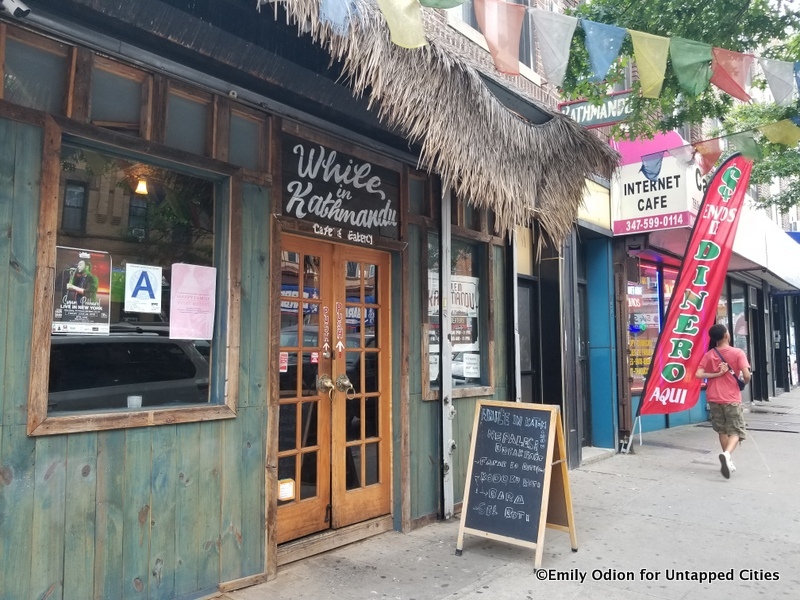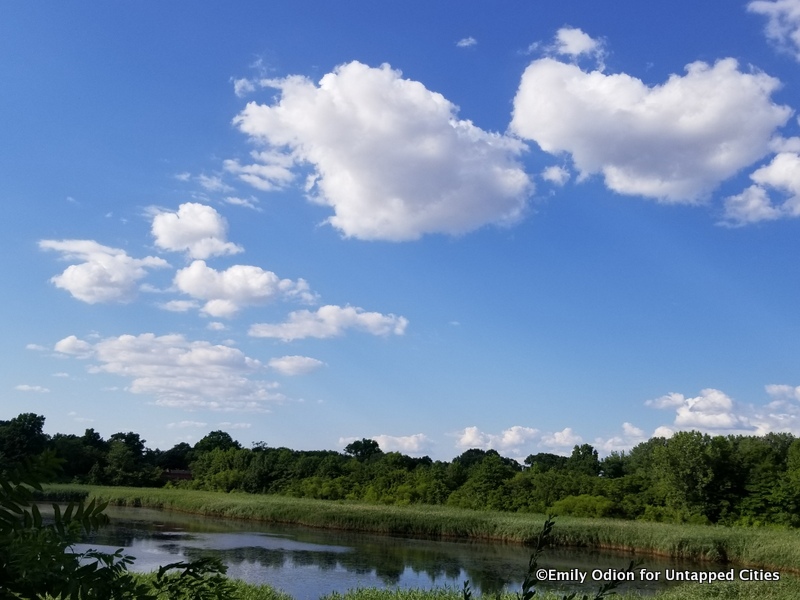
Throughout its history, Ridgewood, Queens has been defined by both its close proximity to Bushwick and its desire to separate itself from it. In the 17th and 18th century, the area was mostly inhabited by Dutch farmers. Later a century long border dispute between Bushwick and Newton—a larger region that included Ridgewood as we know it today—which was resolved eventually by the townspeople placing several boulders on the border with “N” and “B” labels. The Ridgewood area was named after the reservoir built on its South-Eastern corner, and the borders have remained mostly the same ever since.
However, the neighborhood intermittently tried to associate and then disassociate itself from Brooklyn several times through the 20th century. At first, the zip code was one of Brooklyn, as the Ridgewood post office served both areas, until the 1970s when the riots in Bushwick made the locals want to separate the Ridgewood name from the violence happening a few blocks over. And so Ridgewood got its own Queens zip code.
In the mid-2000s, DIY music venues like the original Silent Barn put Ridgewood on the alternative map. With the arrival of outdoor venues like Nowadays and new restaurants and bars catering to young working professionals, its relationship with Bushwick seems to be merging yet again. Still, the term “gentrification” has been connected to Ridgewood for many years. Gothamist pointed out the number of times Ridgewood was rediscovered by the New York Times, going back to 1983. With insider nuance, neighborhood native Emily Favilla explained in Buzzfeed, that the gentrification process has been “slow and subtle,” and complicated.
Whatever your position is, there is a variety of unique places to check out in Ridgewood. Here are our picks for the must-visit spots:
Historical Sites
Ridgewood Reservoir

The Ridgewood Reservoir, located in Highland Park, was built in 1858 and is responsible for the quick population growth in the area during the following century, providing water to hundreds of thousands. The reservoir was decommissioned in 1990 and in 2004 transferred to a parks site by Mayor Bloomberg. The reservoir and the surrounding area are a great place for views of the city skyline, as well as the nearby sweeping cemeteries and the Atlantic to the East. The reservoir itself takes up 50 acres, and the area around the reservoir is park land, which served as a buffer for pollutants when the reservoir was still in use, and now are a great place for walking and sightseeing.
Onderdonk House

If you would like to see one of the famous rocks that once marked the border of Brooklyn and Queens, visit the historic Onderdonk House. The rock was thought to have been dynamited long ago and lost to time, but a rock thought to be Arbitration Rock was excavated in 2001 through a seven year quest by William Asadorian, a librarian with the New York Public Library. Researching archival maps and documents, Asadorian was confident he knew where the rock lay. The City of New York agreed to do the dig, as utility work was already in the pipeline, and brought up the rock. and then moved right next to Onderdonk House.
However, the rock continues to generate controversy. Some believe it’s the wrong rock entirely. Others are upset that it was moved to this location at the Onderdonk House, which effectively means it belongs to Queens. The Director of the Greater Astoria Historical Society believes Arbitration Rock may be an entirely different boulder all together, located in front of a fence on Varick Avenue, about five blocks away. Regardless, today Arbitration Rock seems comfortable in its new home, surrounded by a white picket fence and celebrated with a new plaque. In response to these disputes, a Queens historian jokingly said it should be cut in half for both boroughs to share.
The Onderdonk House is located at 1820 Flushing Ave, Ridgewood, NY 11385





